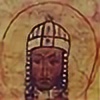HOME | DD
 DiegoOA — Cape Verde giant skink
DiegoOA — Cape Verde giant skink

#macaronesia #extinct #holocene #lizard #paleoart #pleistocene #skink #capeverde
Published: 2021-02-08 20:11:50 +0000 UTC; Views: 3990; Favourites: 79; Downloads: 0
Redirect to original
Description
The genus Chioninia, which includes several species of skinks known as mabuyas, is endemic to Cape Verde. Most species are small lizards, but the genus includes one that was significantly larger than its relatives: the Cape Verde giant skink (Chioninia coctei). Sadly, this lizard became extinct in the last century, being the third giant lizard of the Macaronesian archipelagos to become so, along with the giant lizards of Tenerife and (probably) La Palma. This is the tragic story of this lost lizardThe Cape Verde giant skink could reach up to almost 60 cm in total length, with the males being larger than the females. It showed several adaptations for eating vegetation and moving through it: teeth adapted to eat plants, symbiotic nematodes in its intestine (like some tortoises) and a prehensile (but fragile) tail. Ironically, the islands where it lived in historical times were almost deserted. It seems that the especies evolved in a wetter environment, but eventually the climate of Cape Verde got drier. Instead of plants, in the most arid places this lizard fed mainly on scraps, left by the many seabirds that nested on the islands.
Prior to the arrival of humans in the 15th century (arab sailors may have reached the islands before in search of salt, but didn't settle), the giant skink lived in the islands of São Vicente and Santa Luzia, and the islets of Branco and Raso, to the NW of the archipelago. All these islands were probably united in one landmass during the glaciation periods of the Pleistocene, when the sea level was lower. This allowed the giant skink to spread, but the populations became isolated after the sea levels rose again.
In the late 1400s Portuguese sailors reached Cape Verde, and as the time passed the giant skink became rarer: the spread of agriculture, predation by and competition with invasive species (cats, rats, goats) and hunting by humans eradicated the populations of São Vicente and Santa Luzia, leaving only those of the islets (which were also hunted occasionally by local fishermen for meat). By the end of the 18th century Portuguese scientists collected the first specimens of the lizard, but it wasn't until almost a century later that the origin of the species was identified by herpetologists. And this was the giant skink's death sentence.
During the following decades, the Cape Verde giant skink became a precious target of collectors and terrariophiles, as it was a rare and docile species. Despite the protests of scientists hundreds of animals were captured for being sold in Europe. Added to the hunting pressure, the population of the lizards fell drastically: the last confirmed sighting in the wild dates back to 1898 (there are many posterior local reports, but they were unconfirmed). The last known domestic specimens died during WW2, as their owners couldn't keep maintaining them, and in 1996 the species was officially declared extinct. There might still be some hope though: in 2003 the faeces of a cat in the island of Santa Luzia contained bones and teeth that matched the juvenile stage of the giant skink. Although no additional proof has been collected since, there is a small chance that a relict population survives somewhere in the islands
The fate of the Cape Verde giant skink could be shared by two other species that only live in the same islets, which I've depicted here: on one side, the Raso lark (Alauda razae), which only lives in the islet of Raso; on the other, the giant wall gecko (Tarentola gigas), which lives in both islets and is the largest species of its genus. Both are critically endangered, with very restricted populations. Fortunately, conservation programs have started in the last few years to recover both species: in 2018 some larks were moved to Santa Luzia, where the population is growing thanks to the control of feral cats and the absence of geckos (which eat eggs and chicks), while some studies for the giant gecko have already been made. Let's hope that these inhabitants of this fragile ecosystem can survive into the future and don't follow the same steps as the Cape Verde giant skink
Related content
Comments: 3

👍: 1 ⏩: 1

👍: 1 ⏩: 1

👍: 1 ⏩: 0

















